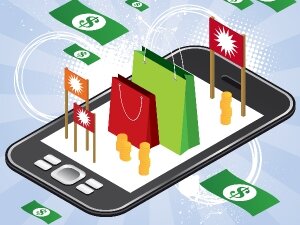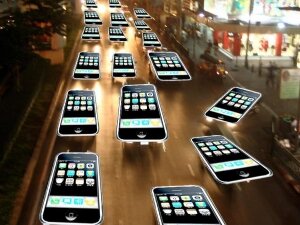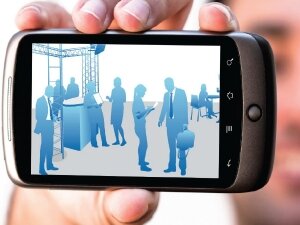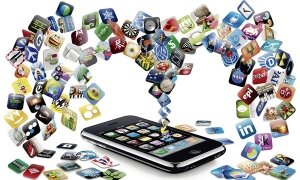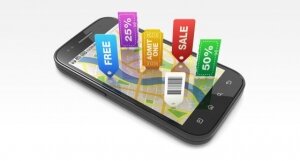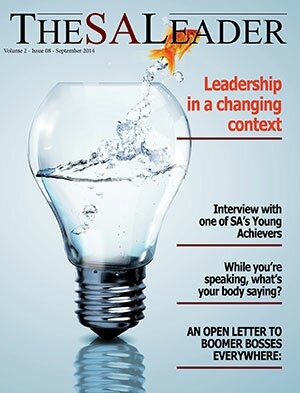From the get go, the business sector has been anxious to discover a way to exploit cellular services technology to access customers. Early mCommerce offerings failed to live up to the hype but excitement is again emerging, this time with a variety of options to suit the desires and budgets of almost any business.
No one anticipated the success that mobile telephony would achieve. According to Nielsen South Africa, more South Africans use mobile phones than radio or television. And an astounding 35% of South African smartphone users revealed in a Google report into worldwide smartphone usage and mobile marketing that they would rather give up their TV than their smartphone.
No other communication channel can deliver retailers an audience as comprehensive as the mobile phone.
Bouncing back
To my mind it was Apple's release of the iPhone, and shortly thereafter it's App Store, that offered mCommerce the opportunity to return to the spotlight.
Until this point, mCommerce strategies predominantly relied on wireless application protocol (WAP) technology. Its SMS delivery mechanism, however, proved to be problematic, and security and congestion drawbacks were significant enough to undermine its virtues and subdue large-scale adoption amongst SA retailers.
Apple's iPhone highlighted an alternative to these SMS systems with its glitzy marketing of actual applications. The impact of this promotion was and continues to be astounding, supported by improvements in modern mobile devices and development technologies, particularly HTML5.
A recent report released by international research firm IDC predicts that the number of annual mobile app downloads will increase from 30.1 billion in 2011 to 200 billion in 2016, an ascent it calls blazingly fast. A closer look at the state of the US market gives a clearer indication of what South Africa can expect to experience in the near future.
- Huffington Post: mCommerce will be bigger than eCommerce within 5 years.
- ABI Research: In 2015, $119 billion worth of goods and services will be purchased via a mobile phone.
- Juniper Research: The market for mobile payments is expected to quadruple by 2014, reaching $630 billion in value.
- ATG Inc: 20% of all consumers and 32% of 18-34 year olds are researching purchases via mobile at least monthly.
Ticket to ride
We can already see local organisations capitalising on the rise of mobile applications. FNB for instance has achieved significant success with the launch of its mobile banking application and not just in the realm of marketing either. Recently CEO Michael Jordaan announced on his twitter account that the bank had in excess of 200 000 transacting apps, delivering over 2 million transactions and R4 billion in transaction value.
Although FNB's return from its mCommerce initiative is certainly compelling, many companies will find that developing a native app is simply not appropriate for their businesses. The cost and complexity involved in developing, maintaining and continuously enhancing an application for numerous platforms, not to mention the approval processes required from the various app stores, presents a daunting hurdle that is only justifiable to a minority of businesses.
Fortunately the emergence of HTML5 – the latest iteration of the language used to create web pages – means organisations no longer have to deliver device-based applications but can look to web-based offerings accessible via a mobile device's browser. Native apps will still have a role to play, if well thought-through, but certainly look set to face major competition in the popularity stakes as HTML5 gains traction.
Alternatives to applications are also available. Mobile couponing, for instance, could be an influential tool in the retail fight to combat constantly slipping engagement rates. A recent report found this form of couponing to offer redemption rates often exceeding 50%; comparatively, paper coupons typically return redemption rates of up to 2%. Mobile couponing is able to achieve its high returns through the use of geolocated, relevant messaging which engages the mobile user with an offer that can be instantly gratified at a store which is at that moment in close proximity.
Location based marketing certainly should not be ignored. Location-based social networking site Foursquare enables users to check in their locations through their phones and informs them of their friends' locations as well as places to go and see close by. Large retailers and brick and mortar stores are taking advantage of this by providing coupons and freebies to those who check in often or first. American Express, for example, has expanded its Foursquare promotion internationally, delivering to its cardholders special offers only available through the application, such as buy one get one free promotions to customers looking for a place to eat.
There's significant advantage to be gained from using a number of mobile capabilities to improve the customer instore experience. Retailers can create a 'bricks & clicks' environment by combining location based services, barcode scanning, and push notifications as an example. In such an environment merchants enable their customers to access the benefits of online shopping such as product reviews, comparative information, and special offers while still delivering the physical instore shopping experience and promoting greater length of time spent within the store's walls.
Retailers simply cannot afford to dismiss the role of the internet in the performance of physical stores. The tendency to define the online influence by the number or value of transactions taking place fails to recognise the considerable number of consumers that turn to the web for information on the best product for their needs, stockists, comparative pricing and current availability within their travel comfort zone. This rapidly growing pool of shoppers may be making their purchases instore, but their decisions are often made before they've stepped out their front door.











